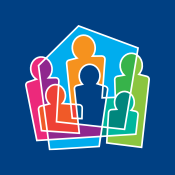3 Ways Art & Creativity Help Children’s Emotional & Social Development
This blog about the role of creativity in children’s development originally appeared in January 2020, all content and relevant statistics have been updated as of June 2022.
Roughly 85% of 2- and 3-year-olds have tantrums. It happens to the best of us and serves no real cause for concern as tantrums are a normal part of a child’s development and can be used to express their emotions.
While tantrums can be brushed off as inevitable growing pains, they’re also a wonderful chance to get a zoomed-in look at how the children around you express themselves and feel their emotions. Evidence suggests you can encourage a healthier response to big emotions by breaking out the art supplies and getting creative.
Creativity and kids go hand in hand: they have big dreams and love to create anything that can help express their inner vision. Plus, being artistic and making things is just plain fun. Keep reading to see the studied benefits of art and creativity on children’s development.
Common playtime activities like imaginary tea parties, finger painting masterpieces, and dress-up extravaganzas prove that children are natural creatives. In their minds, so much is possible, leading them to push the boundaries creatively. We know allowing people of all ages to tap into their creativity lets them connect with their inner voice, so it’s not surprising to find out that children aren’t any different.
1. Helps Express Emotions
The average 3-year-old has around 200 words in their vocabulary and can form sentences together of between 3 and 4 words. This means it can be understandably difficult for a child to express that they are angry, scared, or upset in a productive way. But by giving them the tools to draw or paint, many kids will produce a picture that will show parents exactly how they are feeling.
-
Share a writing notebook for things that could be hard to say face-to-face
- Watch family-friendly movies and discuss the emotions felt by main characters
- Paint on canvas, use watercolors, finger paint, sketch, draw, color, and craft
- Write poems, short stories, jokes, and other forms of quick literature
- Encourage all forms of creative expression from the children in your care
Even if you can’t identify everything that your child has drawn, just being able to get their feelings down on paper will make your child feel a whole lot better than they would have if they’d thrown themselves on the floor in a fit of rage.
Find out the important ways art and creativity can help your children’s emotional and social development in @NEChildrensHome’s most recent blog:Click To TweetAdditionally, art is already employed in healthcare as a useful tool in therapy. Art therapy provides children with a safe place to express their true feelings and emotions without fear of judgment. Professionals practice this daily, and many have seen mental health benefits from this technique.
2. Improves Self-Esteem
Young children typically get just five hours of their parents’ undivided attention per week. Many young children will feel disappointed and frustrated by the lack of attention they receive throughout the day.
But getting their feelings down on paper whenever the mood strikes them is highly beneficial for their self-esteem as it will make a child feel like they are being heard.
It’s recommended that you have a solid supply of art materials in your home at all times. Paper, pens, paint, crayons, glue, ribbon, and similar items can be regularly delivered to your door if required. You should also make sure you sit down with your child and allow them to talk through their artwork with you to bolster their self-esteem further.
Find out how #Art and #Creativity can boost children’s social confidence and instill heightened self-esteem by checking our @NEChildrensHome’s latest article:Click To TweetPlus, it’s very meaningful for children to create and finish a piece of art. They have a concrete example of their creativity, what they can do when they put their mind to something, and how their presence in the world makes a difference. This builds self-esteem inherently by allowing children to acknowledge their accomplishments and recognize their own skills.
3. Boosts Social Confidence
It’s crucial that children have friends as they help kids practice and develop their emotions. Research shows that children lacking friends typically have emotional and mental problems later in life. However, the problem for many children is establishing friendships.
So many creative activities like reading and playing involve conversation; a skill children need to start building as soon as possible. By implementing fun activities to flex these conversational muscles, you can help the children in your life strengthen their ability to speak to and connect with others.
Getting children to be creative together is ideal as they’ll all want to share their views of the world on paper. Together, the children will learn the concept of sharing and the importance of respecting other children’s creativity, thoughts, and feelings, making them more socially connected.
Young children are highly likely to express their emotions in unfavorable ways. But you can curb this and encourage more positive expression simply by introducing art and creative activities in your home.
Looking for more resources or advice when it comes to your family? NCHS has all the tips, strategies, connections, and tools you need to support you and your family on your journey. To find out more, connect with our team today.
Related Blogs
How Lifebooks Help Children Understand Their Adoption Journey
Your Go-To Guide for Financial Support When Pregnancy Surprises You
Helpful Links
© 2025 Nebraska Children’s Home Society. Site by Red Branch Media, Inc.

